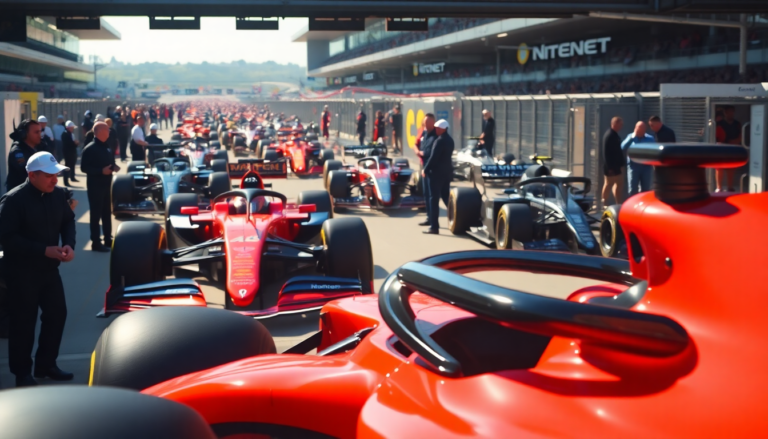Argomenti trattati
In a surprising turn of events during the Spanish Grand Prix, Lewis Hamilton expressed his discontent regarding the recent regulations aimed at controlling the flexibility of Formula 1’s front wings. Following a qualifying session where McLaren drivers locked out the front row, Hamilton’s remarks resonated with many who question the effectiveness of these new rules. He described the changes as a “waste of money,” highlighting the ongoing advantage McLaren holds over competitors.
Understanding the new regulations
As teams approached the Barcelona race, speculation was rife about how a directive from the FIA would impact the performance of the front wings. The intention was to limit the amount of flexing allowed, potentially leveling the playing field. However, the reality proved quite different. Instead of creating a significant shift in competitive balance, the new regulations merely required teams to invest in redesigning their wings, with little to no impact on the time sheets during qualifying.
Hamilton’s criticism stems from the apparent lack of change in performance despite the financial and technical efforts expended by teams. His comments reflect a broader sentiment within the paddock that these regulatory changes might not lead to the desired outcomes. “It’s literally changed nothing,” Hamilton noted, adding that the teams simply had to endure extra costs for modifications that did not alter their competitive standing.
McLaren’s continued dominance
As Hamilton and other drivers scrutinized the regulations, McLaren’s Oscar Piastri and Lando Norris showcased exceptional speed, securing the first and second positions in qualifying. Their ability to maintain a significant gap to rivals, including Hamilton, underscores the effectiveness of their car design and development. Hamilton, who qualified fifth, recognized the challenge ahead. With a half-second deficit from the pole time, he acknowledged the uphill battle against a team that has seemingly found a competitive edge that others are struggling to replicate.
When asked about McLaren’s current standing, Ferrari’s driver echoed Hamilton’s sentiments, admitting that their performance is indeed remarkable. The gap on the track is not insurmountable, but it requires extensive development efforts that may not yield immediate results. The reality of the situation is that while teams can attempt to catch up, the improvements needed are substantial and may take considerable time and resources to achieve.
The implications of regulatory changes
The discussion around the effectiveness of the new regulations raises important questions about the direction of Formula 1. Are these measures merely a band-aid solution to deeper issues within the sport? With Hamilton suggesting that the funds spent on compliance could be better used for charitable purposes, it opens up a larger debate about the priorities within F1. The sport continues to evolve, but at what cost?
As teams grapple with the implications of these rules, the focus will inevitably shift to how they can not only comply but also innovate within the constraints set forth by the FIA. The ongoing development race is not just about speed; it’s about smart engineering and strategic adaptations. As the season progresses, the question remains whether any team can bridge the gap to McLaren or if they will continue to lead the pack.
In the end, Hamilton’s candid comments serve as a reminder of the complexities and challenges faced by teams in Formula 1. The sport thrives on competition and innovation, but regulatory changes must genuinely enhance the racing experience rather than just complicate it. With discussions around performance and regulations ongoing, fans and teams alike will be watching closely to see how this narrative unfolds over the coming races.

